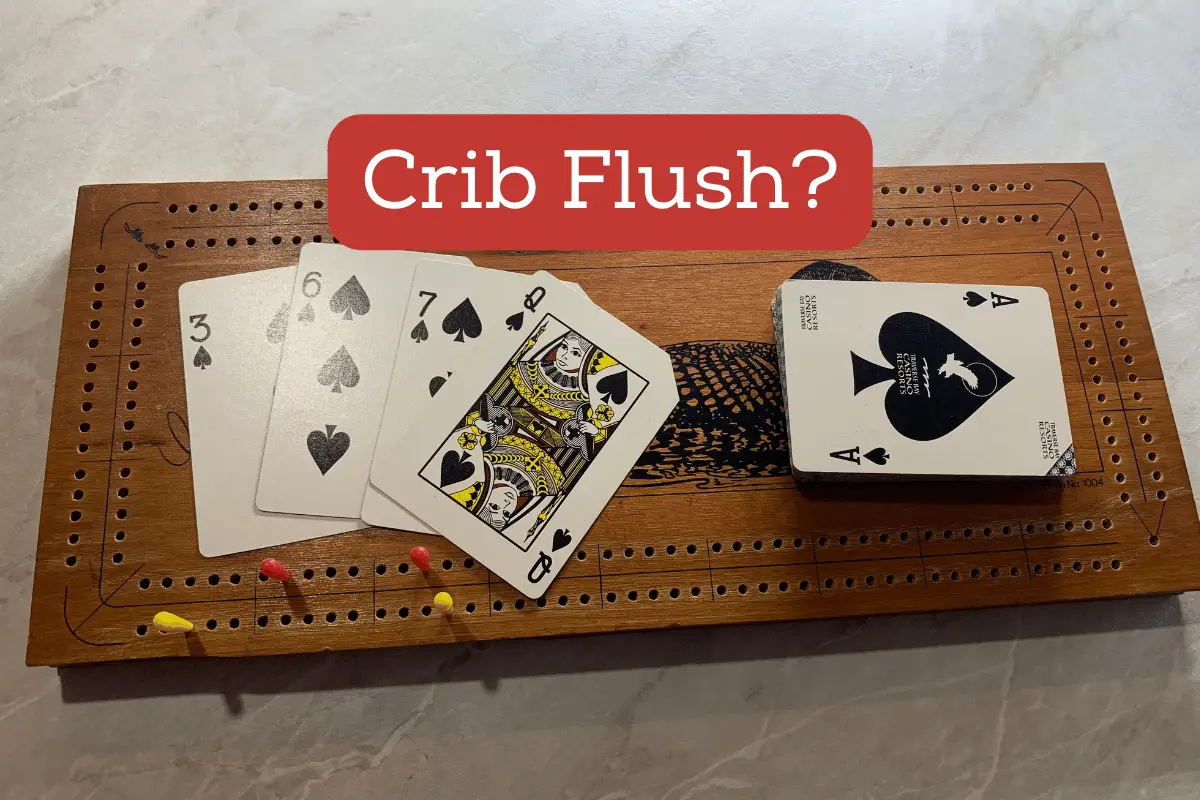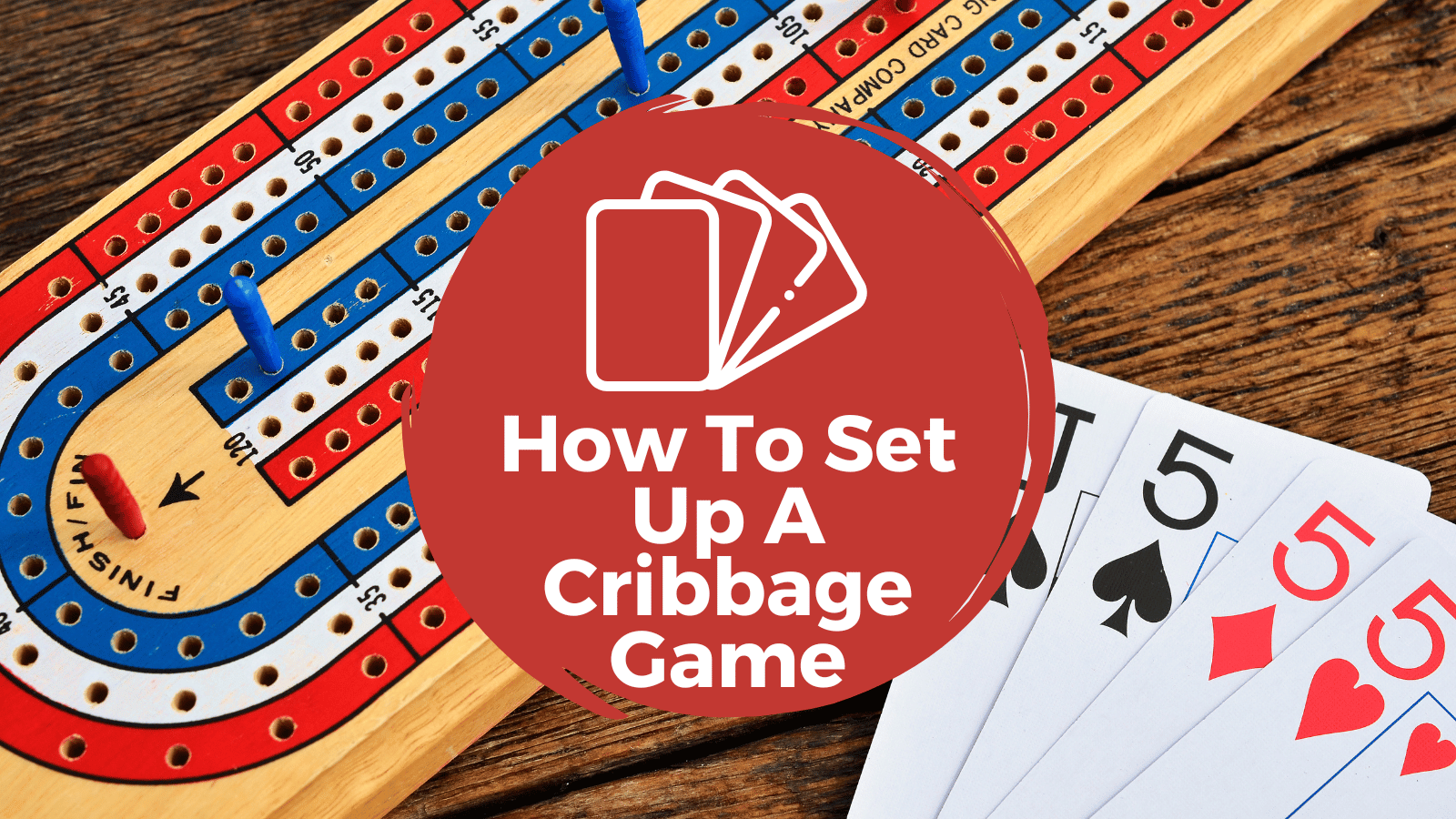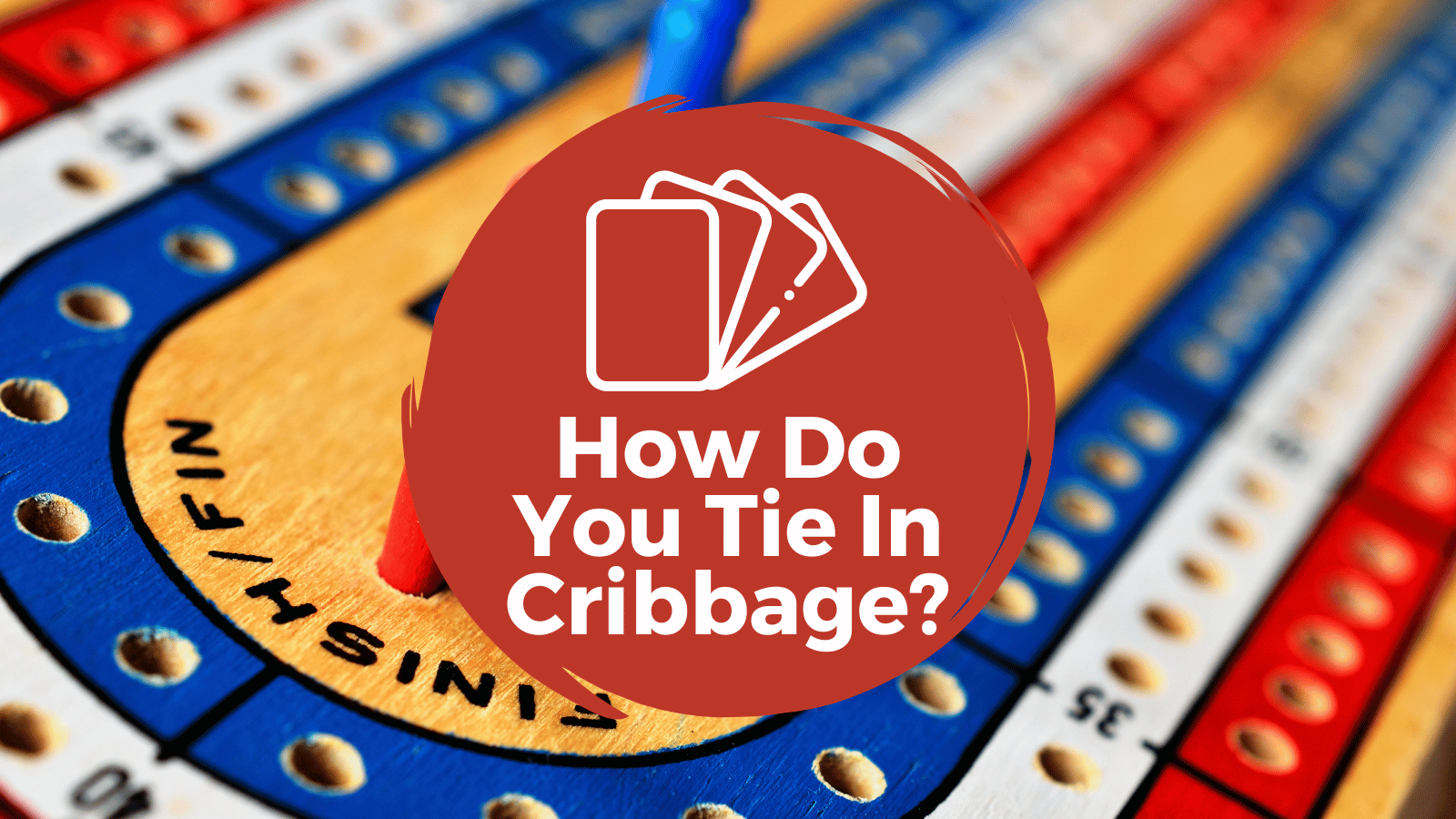One of the most forgotten ways to score in Cribbage is the flush.
It’s also one of the trickiest rules when it comes to scoring a flush in a crib.
I can’t tell you how many times I’ve explained it, and players still think I’m cheating when I explain they didn’t earn the points in their crib.
Here’s the rule:
You flush a crib when all four cards in the crib AND the starter card (cut card) are of the same suit. This is worth five points on its own. A flush in your normal hand only needs the four cards in your hand to be a flush (the starter may be added if it’s the same suit).
For more explanation and answers to other related questions, keep reading!

Want to take your Cribbage game to the next level? Check out this massive list of strategies for improving your game!
Table of Contents
What Is A Flush In Cribbage?
On its own, a flush is when you have all cards of the same suit in your hand.
This is a common way to score in many types of card games.
In Cribbage, you get one point for each card in the flush, but it has to include all four cards in your hand.
Normally, it’s only worth four points.
If the starter card or cut card is of the same suit, then you get to add its total to your hand, making it worth five points in this instance.
Warning! Please take note of the rule for flushes.
It must contain all cards in your hand of the same suit.
If you have three hearts and a spade in your hand and a heart is cut, you can’t swap out the starter for the heart to make it a flush.
Crib flushes work a bit differently, though.
How Do You Flush A Crib?
For a crib to count as a flush, all four cards of the crib and the starter card must be of the same suit.
Because there are five cards involved, you get five points for this.
Unfortunately, because you have no impact on the cards your opponent throws in your crib, there’s no way to “go for” the flush in your crib, nor should you.
Consider a crib flush as a happy accident or an unexpected bonus that just shows up.
Discarding with the intent of getting a flush in the crib is a bad move.
What Are The Odds Of Drawing A Flush Hand?
The odds of drawing a flush in Cribbage are around 3-5%.
Half the deck is of each suit, and you’d need to draw at least four of your six cards as a single suit.
It’s rare, but not uncommon.
Throughout a few games, the odds are you’ll get one.
But realistically, even if you get it, you won’t keep it for that reason.
If there’s a better combination of points, keep those instead.
But don’t forget about it either.
Can You Peg A Flush In Cribbage?
You cannot peg a flush in Cribbage. The rule doesn’t apply during The Play or pegging phase of the game.
This is another one of those areas with some confusion.
After all, every other aspect of scoring stays the same, right?
Well, not every aspect, but the important ones do.
It’s just part of the rules of the game. Flushes are fair game in the hand and the crib but not the pegging.
Ramp your play up by learning the best card to lead in Cribbage during pegging.
Is A Flush Good In Cribbage?

Many new players to Cribbage get excited when they see a flush in their hand.
It’s a natural feeling, especially if you’ve spent any time playing poker.
In traditional poker games, a flush is the fourth most powerful hand, and it’s usually enough to win the hand pretty easily.
In Cribbage, though, it’s only worth the points it gives you.
There are several more powerful and common combinations you’ll want to go with.
Double runs and pair royals (three of a kind) are more common and worth 8 and 6 points, respectively.
Cribbage Pro did a statistical analysis of hands and found the percentage of times you’ll get a double run is around 16%, while the pair royal is 6%.
Both of those are much higher than the flush.
The Controversy: Does The Crib Flush Rule Make Sense?
I’ve noticed that there is some debate on the crib flush rule across the crib forums and community.
Many people argue that forcing the inclusion of the starter card is too high of a bar.
The crib flush is so statistically rare that it becomes insignificant.
The odds of getting the four-card flush in the crib is around 1%. But this is worth nothing unless the starter card matches the suit.
Assuming no other cards of that suit have been played, there’s a 30% chance the right card would be cut.
But if you’ve looked at statistics, you’ll know we have to stack the 1% of the four cards and 30% of the cut together to get our true odds.
When multiplied together, your best odds of getting a crib flush are ⅓ of 1% or 0.3%.
This is saying you’ll get the crib flush 3 times out of 1,000 hands or 1 time out of 300 hands at best.
Why did they make the crib flush so hard?
The most simple answer is often the right one. It’s just tradition.
Many players want to change the rule, while some say it should just stay the same as it makes the game more interesting and adds some serious luck into Cribbage. (Click the link to check out our article on the subject.)
Where do I land on all of this?
If you’re interested, I don’t have particularly strong feelings one way or the other.
I see the logic in changing the rule to make it easier. It’s unnecessarily hard for such a relatively weak combo of points.
It seems unbalanced to me in a game that’s well-balanced (especially for a game around 400 years old).
But then again, this game is so old, and should we change a rule that has minimal impacts on games?
I’m not sure, though any change at this point would be tough to make. It’s probably best to just keep it as is.






